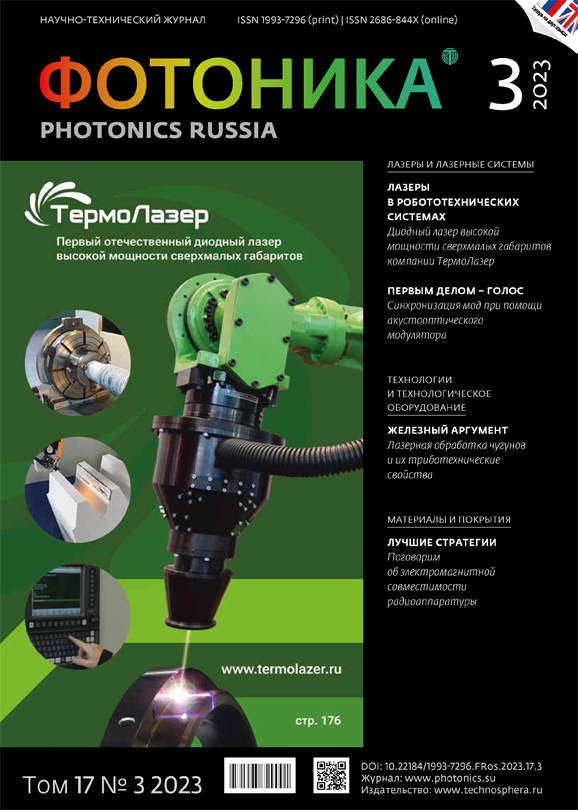Narrow-band Signature Dual-wavelength Method for Photometric Control and Detection of Well-known Configuration Objects Against the Vegetation Background
- Authors: Agayev F.G.1, Asadov H.H.1, Alieva G.V.1
-
Affiliations:
- National Aerospace Agency
- Issue: Vol 17, No 3 (2023)
- Pages: 232-237
- Section: Optical Measurements
- URL: https://journals.eco-vector.com/1993-7296/article/view/626813
- DOI: https://doi.org/10.22184/1993-7296.FRos.2023.17.3.232.237
- ID: 626813
Cite item
Abstract
The theoretical fundamentals of the proposed dual-wavelength narrow-band method of photometric control and detection of the well-known configuration target against the forest background are outlined. The target is detected by calculating its NIR- and RED- narrowband signatures using the proposed formulas at the wavelength intervals with a width of Δλ, closely adjacent to the “red edge” area in the vegetation reflection spectrum and further comparing these signatures with the relevant vegetation signatures. The proposed method provides for the availability of a priori data on the forest spectral signatures, as well as on the ratio of the forest areas and the target on the generated image
Keywords
Full Text
About the authors
Fakhraddin G. Agayev
National Aerospace Agency
Author for correspondence.
Email: photonics@technosphera.ru
ORCID iD: 0000-0002-9826-0868
Dr. of technical sciences, professor
Azerbaijan, BakuHikmet H. Asadov
National Aerospace Agency
Email: photonics@technosphera.ru
ORCID iD: 0000-0003-1180-1535
Dr. of technical sciences, professor
Azerbaijan, BakuGunel V. Alieva
National Aerospace Agency
Email: photonics@technosphera.ru
ORCID iD: 0000-0001-6540-8750
Cand. of technical sciences
Azerbaijan, BakuReferences
- Olsen R. C., Bergman S., Resmini R. G. Target detection in a forest environment using spectral imagery. URL: https://www.researchgate.net/publication/228815798_Target_Detection_in_a_Forest_Environment_using_Spectral_Imagery.
- Gonzalez S. A. R., Shimoni M., Plaza J., Plaza A., Renhorn I., Ahlberg J. The detection of concealed targets in woodland areas using hyperspectral imagery. Annals of the Photogrammetry, Remote Sensing and Spatial Information Sciences. IEEE Latin American GRSS & ISPRS Remote Sensing Conference (LAGIRS 2020). 2020; IV.
- Nilsson P., Nelsson C. Hyperspectral analysis of IR data from a background scene. Proc. SPIE 5075. Targets and Backgrounds IX: Characterization and Representation. 5 September 2003. doi: 10.1117/12/486901.
- Montoya J. R., Sutherland R. A. Narrow-band signature propagation through obscuring atmospheres. Proc. SPIE 5075. Targets and Backgrounds IX: Characterization and Representation. 5 September 2003. doi: 10.1117/12.487640.
- Iqbal I. M., Balzter H., Shabbir A. Identifying the spectral signatures of invasive and native plant nspecies in two protected areas of Pakistan through field spectroscopy. Remote Sens. 2021;13:4009. doi: 10.3390/rs13194009.
- Ray S. S., Jain N., Miglani A., Singh J. P., Singh A. K., Panigrahy S., Parihar J. S. Defining optimum spectral narrow bands and bandwidths for agricultural applications. Current Science. 25 May 2010; 98(10): 1365–1369.
- Mohammed G. H., Noland T. L., Irving D., Sampson P. H., Zarco-Tejada P. J., Miller J. R. Natural and stress-induced effects on leaf spectral reflectance in Ontario species. Forest Research report. No 156.
- Development of an IR signature model. URL: https://dspace.lib.cranfield.ac.uk/bitstream/handle/1826/2912/CHAPTER_6_july26.pdf?sequence=3&isAllowed=y.
Supplementary files








